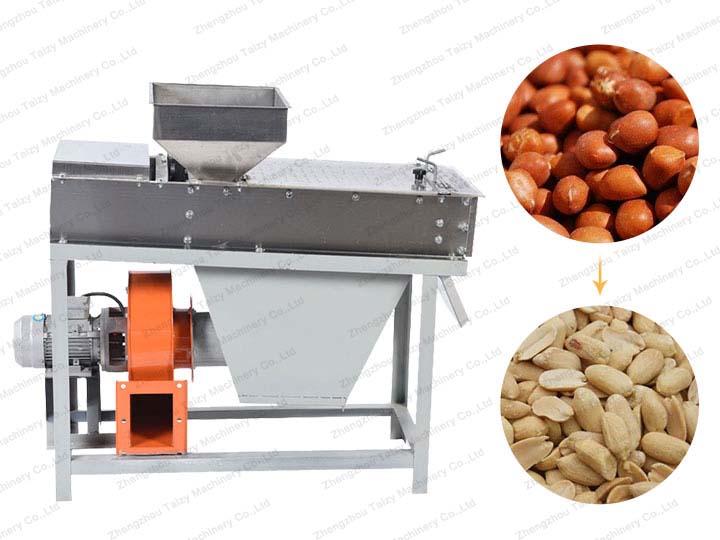The Essential Role of Peanut Skin Removing Machine in the Food Industry
Peanuts, with their delectable taste and versatile applications, have become a staple ingredient in various cuisines worldwide. However, before these delicious nuts can be used in food products or enjoyed as a snack, they often require the removal of their outer skins. This is where peanut skin removing machine play a crucial role. In this article, we will discover the significance, functionality, and applications of peanut skin removing machine in the food industry.

Purpose and Functionality of Peanut Skin Remover
Peanut skin removing machines are specifically designed to separate the peanut kernels from their protective outer shells, streamlining the processing of peanuts in food production. These machines employ mechanical, wet, or air-driven techniques to effectively and efficiently remove the skins, thereby enhancing the quality and value of the final product.
Types of Peanut Skin Removing Machine
Peanut skin removing machines come in various types to cater to different processing needs. Dry type machines use mechanical abrasion and friction to rub off the skins from peanuts, while wet type machines utilize water or steam to soften the skins before removal. Air-driven machines, on the other hand, rely on high-speed air streams to blow away the skins. Each type has its unique features and benefits, making them suitable for different processing environments and requirements.
Working Principle
The working principle of peanut skin removing machines revolves around the careful separation of peanut kernels from their skins. Dry type machines often employ a combination of rubbing surfaces, such as abrasive rollers, to gently remove the outer layer, while wet type machines submerge the peanuts in water or expose them to steam, loosening the skins for subsequent removal. Air-driven machines create a controlled airflow that blows away the skins, leaving behind the kernels.
Design and Components
Peanut skin removing machines are designed with efficiency and durability in mind. They typically consist of a feed system that introduces the peanuts, a skin removal mechanism, a collection system to separate the skins from the kernels, and cleaning mechanisms to remove any debris or remaining skin particles. The machines are often made of food-grade materials and are equipped with adjustable settings to accommodate different peanut sizes and moisture contents.
Efficiency and Productivity
The efficiency and productivity of peanut skin removing machines play a vital role in the food processing industry. These machines are capable of high processing capacities, ensuring a steady supply of peeled peanuts for further processing or packaging. Additionally, they boast impressive skin removal rates, minimizing product waste and maximizing yield. Modern advancements have also led to improved energy efficiency, contributing to sustainable and cost-effective operations.
Factors Affecting Performance
Several factors influence the performance of peanut skin removing machine. Peanut moisture content, variety, and size can impact the efficiency of skin removal. Machine settings, such as speed and pressure, need to be adjusted accordingly. Regular maintenance, including cleaning and lubrication, is essential to ensure optimal performance and prolong the machine’s lifespan.
Summary
Peanut skin removing machine is indispensable tools in the food industry, streamlining the processing of peanuts by efficiently separating the kernels from their skins. With their diverse applications and ability to enhance productivity, these machines have become vital for food manufacturers, snack producers, and other peanut-related industries. As technology advances, we can expect further innovations and improvements in peanut skin removing machine, ensuring a steady supply of peeled peanuts to satisfy our culinary cravings.
